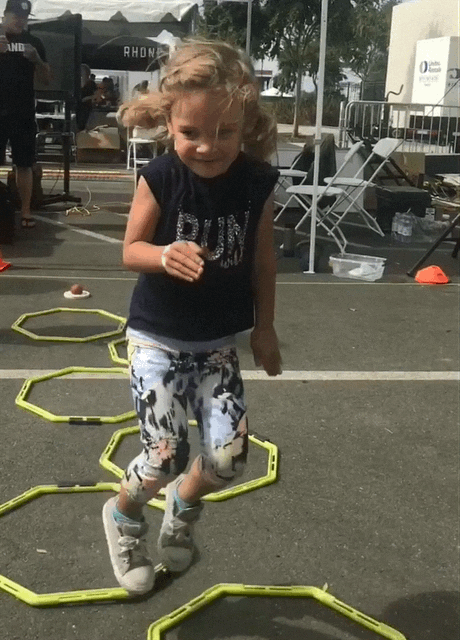Playing with What not to do with Kids Fitness Games
Part 1 of 2
During the early Brand X Martial Arts classes, we had both kids and adults spin around a 24-36” wooden dowel, forehead at the top, moving their feet around it as fast as they could. This was done for a given time and then kids were asked to perform a technique, a form or spar immediately after. Not surprisingly, this provided fantastic entertainment value for the audience, but for the participant it provided focus, practicing from a situational disadvantage, elements of physical literacy and timely vestibular work. Yet, in a Brand X Youth Fitness Program this game would earn only a 2 of 5, for hitting all the important ingredients.
When we look through the lens of academics, and envision sending our children or teens off to basic math classes we expect that they will receive instruction in addition, subtraction, division and multiplication. Not only that, but we expect the material to be presented in multi media, visually, auditorily, using manipulatives and posing challenges. This doesn’t always happen, yet we remain hopeful. Our goal as parents would be that our children got all the best opportunities for optimized learning in every lesson, in every classroom.
As the world watches our youth develop in 2020 and beyond, global awareness of current movement issues grows.
We can all see that for a variety of reasons movement experience in today’s youth is drastically different, if not an aberration of the past.
Child specific issues may vary from culture to culture, but we all agree that we want our youth to have the best possible education and experience from which to build an active, strong and healthy future. As with all aspects of the Brand X® Program, this requires specific design and intent. Even our games should include as many good ingredients in the “movement recipe” that we can add to the mix.
Obviously, games MUST be fun, and be test for sustained engagement. This is a given and has to be considered in overall fitness game design. A game containing all of the below elements but lacking in fun or playfulness will fail.
The primary drivers in the optimal game recipe are:
Games includes or enhances elements of Physical Literacy
A game that includes locomotion, running, skipping, crawling, throwing, kicking, carrying, rolling, mirroring, grappling, rhythm, translation of movement to language, etc.
Game includes physiological development opportunity practice
A game that includes vestibular activation, or impact loading, such as spinning, getting upside down, jumping hopping leaping or bounding.
Game include S&C positional practice or strengthening
A game that includes static knee position practice, jumping initiation and landing position practice, foot ankle and knee position practice, rotational or anti rotational work, foot or ankle strengthening exercises.
Squatting, hinging, lunging, pushing, pulling, or core exercises.
Game includes Elements of free play
A game that allows for exploration, improvisation and experimentation with few restrictions.
Game includes opportunities for Movement Solutions
Such as hanging from and moving along a bar, under a bench, over a wall, through an obstacle course. With an external load, how to carry an object while stepping up and over objects, how best to throw an object for distance,etc.
Examples abound of Youth Fitness games that cover one or two of the listed ingredients, but how many cover all five?
As Coaches we may find ourselves opting for the games the kids frequently request or those with less troublesome set ups and explanations. Let’s keep up the mission to Do what is Best for Kids – develop and make use of the games that provide the optimal ingredients for Youth development.
**In our Brand X Game compendium (within the Brand X® Training Center Start Up Package) we are in the process of migrating from the alphabetical listing to a color coded system to reflect relative density of content.
A complimentary mini-course to introduce the Brand X philosophy and developmentally aligned framework for optimal youth athletic development

